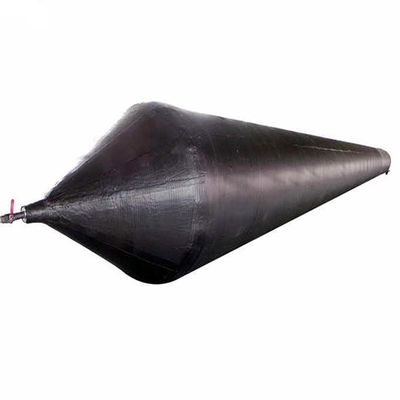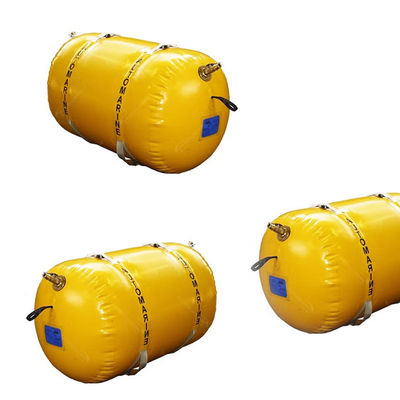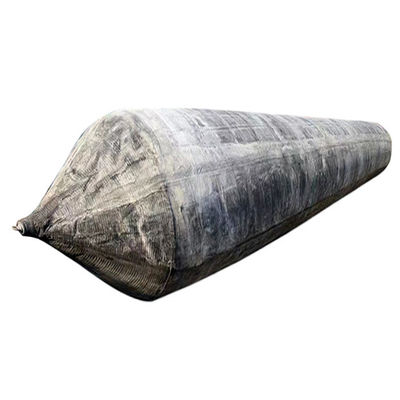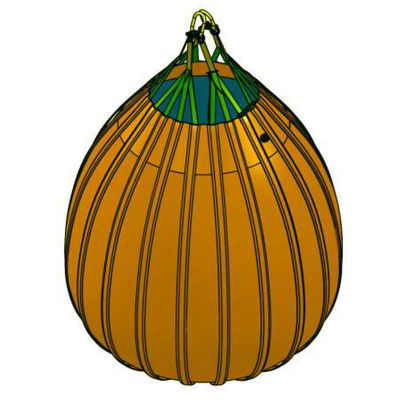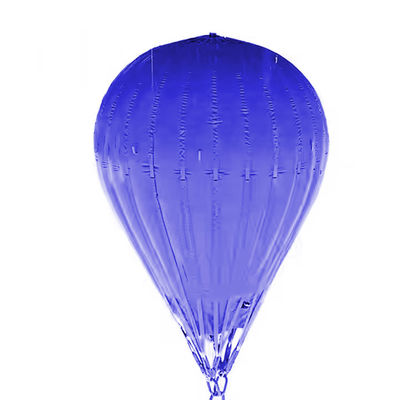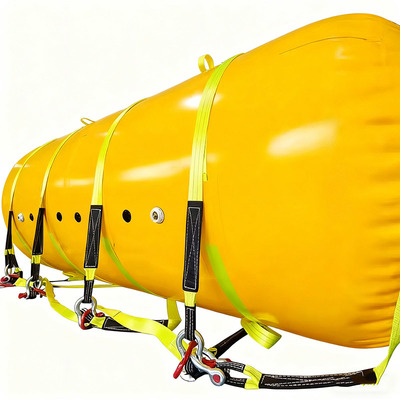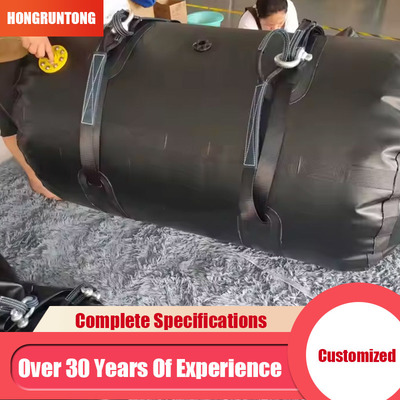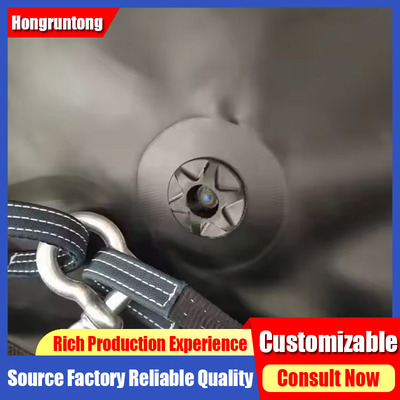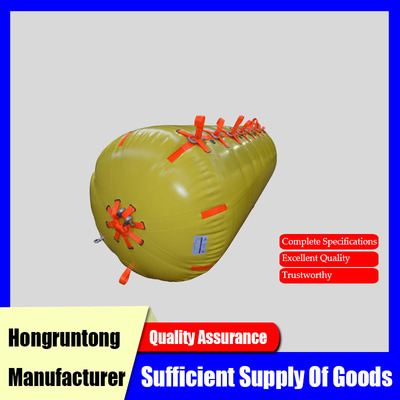Underwater Air Lift Bags Flexible Structure Safe Operation Long Service Life
Buoyancy Bags are advanced inflatable lifting devices specifically engineered for underwater lifting, floatation, and subsea support operations. Constructed from multi-layer reinforced rubber and high-tensile synthetic fabrics, these bags provide precise buoyancy, high load-bearing capacity, and long-term durability, making them essential for marine salvage, offshore construction, and subsea maintenance tasks.
Case Study: Submerged Cargo Container Recovery
In 2022, a commercial port experienced an incident in which a 20-foot cargo container partially submerged due to mooring line failure during a heavy storm. The marine engineering team deployed Buoyancy Bags to lift and stabilize the submerged container. Four Buoyancy Bags, each 2 meters in diameter and 4 meters in length, were attached to the container using high-strength slings. To ensure gradual and controlled ascent, the bags were inflated sequentially using nitrogen, maintaining a uniform lift that prevented sudden tilting or rotation.
Specifications
| Product Name | Buoyancy Bags |
|---|
| Raw Material | PVC coating fabric |
|---|
| Type | Cylindrical |
|---|
| Size | 500kg, 1000kg, 5000kg 10000kg, etc |
|---|
| Thickness | 0.4-1.2mm, or as request |
|---|
| Color | Yellow, Blue, Black, etc |
|---|
| Density | 0.33-0.9g/cm3 |
|---|
| Safety Factor | 7:1 |
|---|
| Tolerances | +/- 0.03 on densities +/- 0.2 mm on thickness +/- 0 to +3mm on width +/- 0 to +3mm on length |
|---|
| Model | Buoyancy [kg] | Buoyancy [lbs] | Diameter [mm] | Length [mm] | Appr. Weight [kg] |
|---|
| HM-ULB01 | 200 | 441 | 500 | 1,000 | 5 |
| HM-ULB02 | 500 | 1,103 | 800 | 1,000 | 8 |
| HM-ULB03 | 1,000 | 2,205 | 1,000 | 1,500 | 11 |
| HM-ULB04 | 2,000 | 4,410 | 1,300 | 1,500 | 20 |
| HM-ULB05 | 4,000 | 8,820 | 1,600 | 2,000 | 50 |
| HM-ULB06 | 6,000 | 13,230 | 2,000 | 2,000 | 66 |
| HM-ULB07 | 8,000 | 17,640 | 2,000 | 2,600 | 75 |
| HM-ULB08 | 10,000 | 22,050 | 2,400 | 2,400 | 80 |
| HM-ULB09 | 15,000 | 33,075 | 2,600 | 3,000 | 110 |
| HM-ULB10 | 20,000 | 44,100 | 3,000 | 3,000 | 130 |
| HM-ULB11 | 30,000 | 66,150 | 3,000 | 4,500 | 170 |
| HM-ULB12 | 50,000 | 110,250 | 4,000 | 4,000 | 220 |
| HM-ULB13 | 70,000 | 154,350 | 4,000 | 5,700 | 310 |
| HM-ULB14 | 100,000 | 220,500 | 4,000 | 8,000 | 450 |
| HM-ULB15 | 150,000 | 330,750 | 5,000 | 8,000 | 660 |
| HM-ULB16 | 200,000 | 441,000 | 5,000 | 10,000 | 900 |
*Note: Other sizes can be customized according to the requirements.
Features
High Strength Reinforced Construction
Buoyancy Bags are fabricated using multi-layer reinforced rubber and high-tensile synthetic fabrics, engineered to withstand extreme underwater pressures and repeated load cycles. The material layers are bonded through high-pressure vulcanization, ensuring uniform strength and preventing delamination under stress.
Precise Buoyancy Control and Handling
One of the most critical features of Buoyancy Bags is accurate control over buoyancy. Precision-engineered inflation and deflation valves allow operators to adjust lift force gradually, ensuring smooth ascent or descent of underwater loads.
Durability in Harsh Marine Environments
Buoyancy Bags are designed to withstand long-term exposure to saltwater, UV radiation, and abrasive conditions. The outer rubber layer protects the inner reinforced fabrics from mechanical damage, chemical degradation, and environmental wear.
Operational Flexibility and Scalability
Buoyancy Bags can be used in a variety of underwater lifting scenarios due to their flexible design and compatibility with different inflation systems. They can be inflated using compressed air, nitrogen, or other inert gases, depending on operational requirements.
Safety Oriented Design Features
Buoyancy Bags incorporate several design elements to enhance operational safety. The materials are engineered to withstand overpressure and resist punctures, and valves allow controlled inflation to prevent sudden lift surges.
Applications
- Marine Salvage Operations: Lift sunken vessels, vehicles, cargo containers, and other submerged objects
- Offshore Construction and Installation: Installation and positioning of subsea structures
- Underwater Maintenance and Inspection: Temporarily lift or stabilize equipment for maintenance
- Emergency Response and Recovery: Accident salvage, flooding mitigation, or rapid recovery
- Subsea Equipment Positioning: Temporarily support or reposition subsea installations
Advantages
- Proven Engineering and Design Expertise
- High Quality Materials and Manufacturing Standards
- Customizable Solutions for Diverse Needs
- Global Service Network and Technical Support
- Commitment to Safety and Compliance
FAQ
Q1: What is the maximum lifting capacity of Buoyancy Bags?
A: The lifting capacity of Buoyancy Bags depends on the bag's diameter, length, and inflation pressure. Standard models range from 0.5 tons to over 15 tons, with custom options available for specialized operations.
Q2: Which gases can be used for inflation?
A: Buoyancy Bags are compatible with compressed air, nitrogen, and other inert gases. The choice of gas depends on operational requirements and safety considerations.
Q3: How should Buoyancy Bags be deployed underwater?
A: Deployment involves securely attaching the bags to the load using reinforced slings or rigging. Inflate the bags gradually using precision valves, monitoring pressure and lift force carefully.
Q4: How durable are the bags in saltwater and abrasive conditions?
A: Buoyancy Bags are designed for prolonged exposure to saltwater, UV radiation, and mechanical abrasion. The multi-layer reinforced rubber and fabric construction ensures long-term structural integrity.
Q5: Can multiple Buoyancy Bags be used together for a single operation?
A: Yes, multiple bags can be used simultaneously to lift heavier or irregularly shaped objects. Load distribution must be carefully planned to maintain stability and controlled ascent.

 Votre message doit contenir entre 20 et 3 000 caractères!
Votre message doit contenir entre 20 et 3 000 caractères! Merci de consulter vos emails!
Merci de consulter vos emails!  Votre message doit contenir entre 20 et 3 000 caractères!
Votre message doit contenir entre 20 et 3 000 caractères! Merci de consulter vos emails!
Merci de consulter vos emails! 
